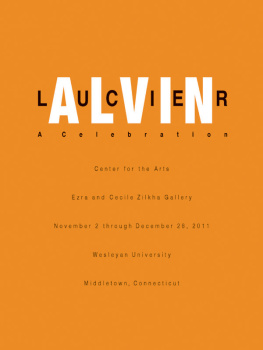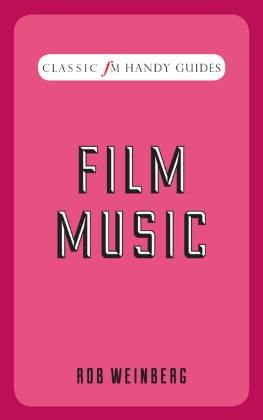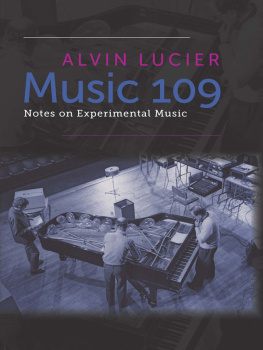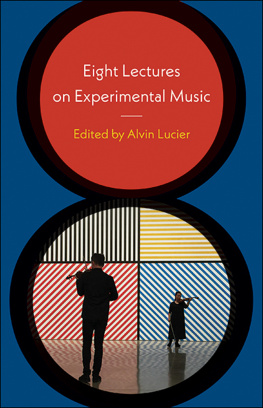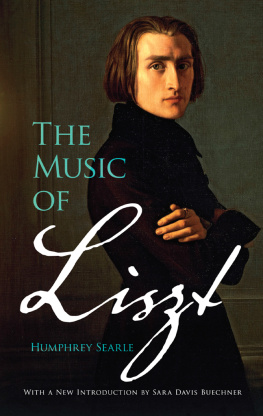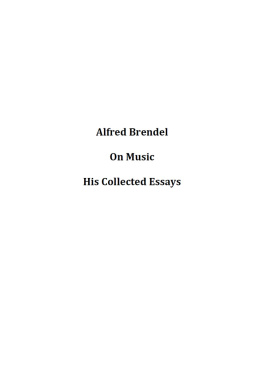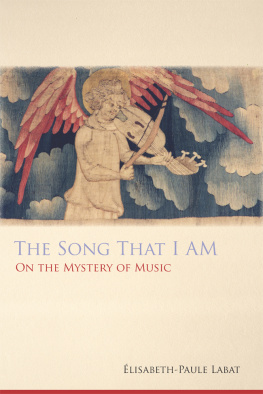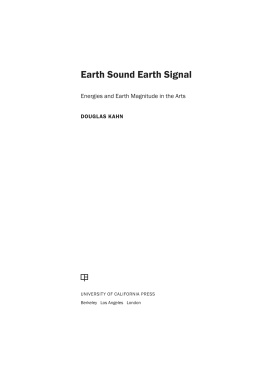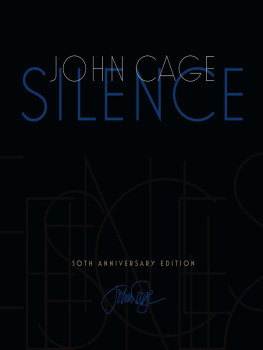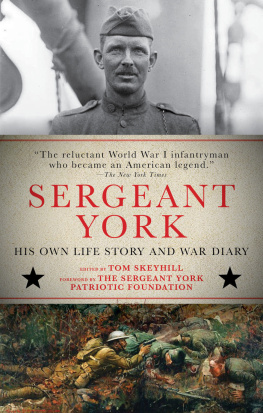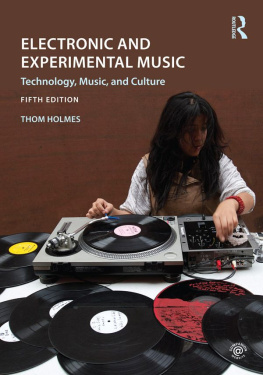CHAMBERS
CHAMBERS
Scores by ALVIN LUCIER
Interviews with the composer
by DOUGLAS SIMON

Scores copyright 1980 by Alvin Lucier
Interviews copyright 1980 by Alvin Lucier and Douglas Simon
Several of these scores and interviews have appeared in similar or different form in Arts in Society; Big Deal; The Painted Bride Quarterly; Parachute; Pieces 3; The Something Else Yearbook; Source Magazine; and Individuals: Post-Movement Art in America, edited by Alan Sondheim (New York: E.P. Dutton, 1977).
Typography by Jill Kroesen
The authors gratefully acknowledge the support of a Wesleyan University Project Grant.
Library of Congress Cataloging in Publication Data
Lucier, Alvin.
[Works. Selections]
Chambers.
Concrete music.
Bibliography: p.
Includes index.
1. Concrete music. 2. Chance compositions. 3. Lucier, Alvin. 4. ComposersUnited StatesInterviews. I. Simon, Douglas, 1947 II. Title.
M1470.L72S5 789.98 79-24870
ISBN 0-8195-5042-6
Distributed by Columbia University Press
136 South Broadway, Irvington, N.Y.
Printed in the United States of America
First edition
For Ellen Parry and Wendy Stokes
CONTENTS
PREFACE
I first met Alvin Lucier in 1968 when he came to Wesleyan University, where I was an undergraduate, to offer a course in new music. He was still teaching at Brandeis University then and traveled to Middletown, Connecticut, once a week from Waltham, Massachusetts. It was an exciting class that had a strong influence on my own ideas, and when I chose a subject for an honors thesis in 1969, I decided to write on Alvins work.
At that time, I was most familiar with his piece Chambers. I had watched it taking shape in 1968 and had helped perform it more than once by the time I began my project, so it seemed a good candidate for my choice of subject matter. A major portion of the thesis was to be devoted to a careful, objective description of a single performance of Chambers at the Museum of Modern Art in New York, in which I had performed, and I felt I needed a block of personal information from Alvin to balance that. If the description of the piece were to be of a specific performance, the idea of a specific conversation, an interview, seemed a promising parallel. And so it was.
In December of 1968, we sat in the greenroom of the Slosberg Music Center at Brandeis, a very resonant, intimate space, and talked with each other. I have a clear memory of the effort involved in making oneself understood with a tape recorder running, but Alvin and I were both pleased with the results.
When we examined the transcription, we found more to please us. Alvin felt his ideas were stimulated and organized by the questions and enjoyed seeing his thoughts on paper. I appreciated that, and also found that his observations and, perhaps more importantly, his mode of expression suggested several lines of inquiry in my thesis. We were soon excited about the possibilities of continuing the interviews, and we decided to conduct several more with an eye toward publication. Of the many we did, the best ones were always those devoted to particular compositions, and we grew to accept that as the organizing influence in the book.
Alvin is a stutterer, and so has always to be prepared to say something unexpected. I consider this his verbal signature. The kind of compositional decisions discussed here seem all the more revealing to me in the light of this enforced verbal flexibility. To me, Alvins explanations of his acceptance of multi-level images in the realization of his ideas (the crickets in Vespers, the campfire in Tyndall Orchestrations) seem to be truly sympathetic to his verbal character.
Id like to suggest that Alvins scores, included here as the formal representations of his compositions, may be illuminated by the interviews, informal representations of the same procedures. They are about his music while they are like his music. With this in mind, the reader (who perhaps will also have the opportunity to attend one or more of Alvins performances) may in fact experience a significant portion of a working artists reality over an extended and productive period of his career.
Douglas Simon
New York1978
CHAMBERS
CHAMBERS (1968)
Collect or make large and small resonant environments.
1. Sea Shells
2. Rooms
3. Cisterns
4. Tunnels
5. Cupped Hands
6. Mouths
7. Subway Stations
8. Bowls
9. Shoes
10. Hollows
11. Caves
12. Suitcases
13. Ponds
14. Stadia
15. Water Spouts
16. Bays
17. Tombs
18. Conduits
19. Canyons
20. Boilers
21. Pots
22. Ovens
23. Barrels
24. Bulbs
25. Bottles
26. Cabins
27. Wells
28. Bells
29. Capsules
30. Craters
31. Empty Missiles
32. Cacti
33. Beds
34. Webs
35. Pools
36. Boats
37. Cones
38. Funnels
39. Bones
40. Stills
41. Gins
42. Draws
43. Tubes
44. Theatres
45. Cars
46. Springs
47. Flumes
48. Trees
49. Others
Find a way to make them sound.
50. Blowing
51. Bowing
52. Rubbing
53. Scraping
54. Tapping
55. Moving
56. Fingering
57. Breaking
58. Burning
59. Melting
60. Chewing
61. Jiggling
62. Wearing
63. Swinging
64. Bumping
65. Dropping
66. Orbiting
67. Creaking
68. Caressing
69. Bouncing
70. Jerking
71. Flipping
72. Levitating
73. Hating
74. Skimming
75. Ignoring
76. Talking
77. Singing
78. Sighing
79. Whistling
80. Walking
81. Snapping
82. Cracking
83. Snoring
84. Boring
85. Praying
86. Loving
87. Spraying
88. Bowling
89. Channeling
90. Freezing
91. Squeezing
92. Frying
93. Exploding
94. Poking
95. Screwing
96. Lowering
97. Shaking
98. Impeding
99. Dancing
100. Others
Sounds of portable resonant environments such as sea shells and cupped hands may be carried out into streets, countrysides, parks, campuses, through buildings and houses, until outer limits are reached where minimum audio contact can be maintained by a player with at least one other player.
Sounds of the outer environment encompassed by the players may be heard with reference to the sounds of the portable resonant environments carried by the players. Sounds of determinate pitch in the outer environment may be heard in simple or complex relationships to the pitches of the portable resonant environments. Sounds of indeterminate pitch in the outer environment may be heard to take on the pitch, timbral, dynamic, and durational characteristics of the sounds of the portable resonant environments.
Sounds of fixed resonant environments such as cisterns and tunnels may be made portable by means of recordings, or radio or telephone transmission, and carried into inner or outer environments. When carried into inner environments, such as theatres into beds, the sounds of the now-portable resonant environments may either mingle with or take over the sounds of the inner environment. When carried to outer environments, such as boilers into parks, the sounds of the now-portable resonant environments may be treated as original portable environments.


